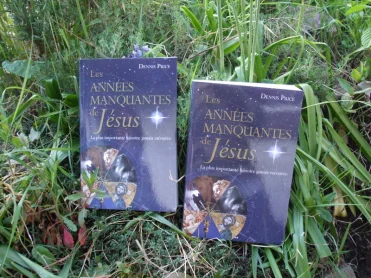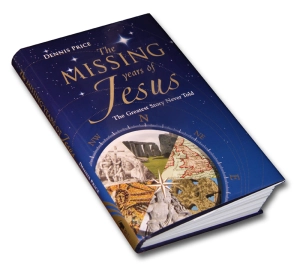
My book The Missing Years of Jesus was published in 2009, after which I received an enormous amount of correspondence, requests for interviews, personal appearances and so forth, all of which was very gratifying. This interest persists, so for the benefit of all those who might be curious about the subject, I thought it would be useful for everyone if I made some attempt to cover events and developments from as far back as twenty years ago.
From memory, the first faint ideas for this book came to me in 2004, when I was studying Stonehenge and considering setting up a website devoted to providing original information on the ruins. At some point, I learned that Stonehenge was considered by some to be the location for the ‘dark, satanic mills’ as mentioned by the visionary genius William Blake in his poem And Did Those Feet in Ancient Time?
The words to this poem are now better known to us as Jerusalem, a song that has long been Britain’s unofficial national anthem. The first verse suggests that Christ once visited Britain, so while I’d sung this beautiful song since childhood, it was only in 2004 that my mind became concentrated on the idea that it might have referred to at least one specific location in Britain.
I gradually became aware that there was a gap of eighteen years, or over half his entire recorded lifetime, in the written accounts of the most famous person ever to have lived. The more I thought about it, the more the idea enthralled me, so I started looking into it and I soon discovered that I was not the only person who was intensely curious about these lost or ‘missing years’.
I was living on Salisbury Plain when these ideas occurred to me and I made what I now see as an ill-considered, naive, but nonetheless highly illuminating attempt to discuss the matter with others who might be in a position to offer an informed and interesting opinion. I had received a classical education inasmuch as I’d studied Latin, Greek and Ancient History at school at Monmouth in the 1970s, while I’d spent almost four years working for Wessex Archaeology. With this in mind, I briefly laboured under the impression that I’d be treated as a serious enquirer, but I was unaware at that time of the almost visceral loathing that some senior Christian clerics had for nearby Stonehenge.
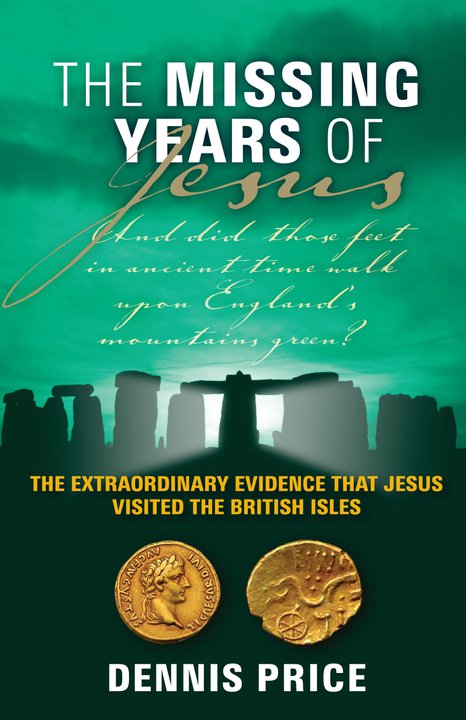
I ascribed this to Stonehenge’s fantastic popularity as a spiritual destination, which meant in real terms that legions of riot police were periodically deployed to keep at bay the tens of thousands of people who were regularly drawn to visit the remains of the monument, in stark contrast to the dwindling congregations over which the aforementioned clerics ruefully presided. I can’t hope to do full justice to the shocking details of this episode here, but I fully intend to record them all elsewhere on another occasion, so in the meantime, I’ll proceed with my brief account of how my book came into being and of what transpired after its publication in 2009.
I’ve gone over this next phase in publications such as The Watkins Review, one of many outlets to print features on my book, but in essence, I struggled badly when I looked around in 2004 for information dealing with the idea that Jesus might have visited Britain as a young man. There were certainly printed collections of the many relevant legends in the West Country and elsewhere, but as I could find no actual study of the matter, beyond a few speculations, I decided that I might perhaps ultimately write one myself.
As anyone who’s even broadly familiar with the subject will know, the Biblical character Joseph of Arimathea features prominently in most of the legends of Christ in Britain, mainly as a merchant trading in tin, while there are also legends that he and Christ actually worked in mines in ancient Britain. Very little is written in the Bible about Joseph of Arimathea, but I studied it all in translation and in the original Greek, because I thought that the passages in question must contain some clue or suggestion about the career the legends credited this enigmatic figure with.
The alternative was to follow the entrenched and immovable Establishment view that for some unknown reason, hordes of people in mediaeval Britain chose to pluck an obscure character from the New Testament, to credit him with being a tin miner and to add that he’d brought no less a person than the central figure in their religion along with him for an extended period when he visited Britain.
I thought this latter scenario defied all credulity, so I did what all respectable enquirers are supposed to do, which was to study the uncontested source material. As I wrote in minute detail on page forty-seven and elsewhere in my book, the Gospel of Matthew unambiguously describes Joseph of Arimathea as a man who cut, quarried or mined rock, something no one else had ever previously highlighted in connection with his purported visits to Britain as a tin miner. I regard this as perhaps the most outstanding discovery and contribution I’ve made to the question of Jesus in Britain, although I have to concede that it seems to have been almost universally ignored.
I really am not concerned by this, if only because after this discovery, more and more information that I thought had a bearing on the mystery of Christ’s lost or missing years gradually came to my attention, although I cannot say how or why this happened. It’s a theme I’ll return to later here, but my primary aim in writing this book was to gather as much information as I could that might give some clue as to where Christ was during these eighteen missing years; for my own satisfaction, because the subject increasingly fascinated me, but also because I’d become more and more aware that it was a mystery that held the attentions of million of other people across the globe.
As for the book itself, then I’m still proud of what I produced, although I’m painfully aware that it could have been better, had I paid more attention to the considered opinions of Lizzie Hutchins, the truly gifted and insightful editor that I was blessed to have helping me as I wrote the book. This is not a mistake I intend to make twice, but I console myself with the idea that there can be few authors who look back on any given work they’ve produced a few years down the line and consider it to be flawless.
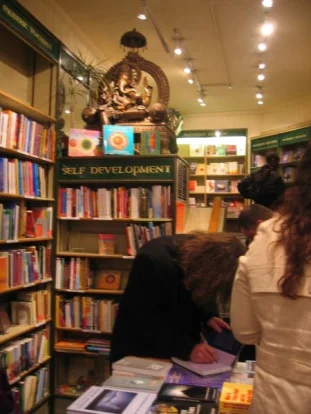
The launch party for my book was held in Watkins Bookshop in London, something I considered a huge honour in light of this fine establishment’s long and illustrious history. Every copy of the book in the shop was rapidly sold, I met up with some friends that I’d not seen in years and I was overjoyed when Geraldine Beskin came along to the party. Geraldine is a wonderful lady I’d had the pleasure of knowing since the late 1970s, when I first ventured into the mesmerising surroundings of her world famous Atlantis Bookshop on Museum Street.
To the best of my knowledge, The Missing Years of Jesus wasn’t reviewed by any of the mainstream media, but it was widely discussed elsewhere in a generally favourable light and that includes a considered review by the late Colin Wilson, a prolific writer and recognised authority on occult and esoteric subjects. I was invited to write features for numerous magazines and I was interviewed on numerous occasions on radio and television.
A few years later, I was interviewed by the late Colin Fry of the BBC in connection with what was then the forthcoming opening ceremony for the London Olympic Games. I received correspondence from people of all faiths and none via my publisher, the recurring theme being that while they didn’t necessarily agree with all my conclusions, they had enjoyed reading the book and enjoyed considering for themselves all the evidence it contained, as they were previously unaware that such material existed. As was I, before I was driven to look for it and to eventually find it.
I had cast my net wide while compiling and examining what I thought of as ‘admissible evidence’ in my book, but there was one detailed legend that I deliberately didn’t look into. I had heard of a British adventurer in Palestine in the 1930s who repeated a tale he said he’d heard from the Maronite people of Lebanon, a tale that went into great detail about Christ working on a ship bound for Britain as a young man, of the Mediterranean port from which he sailed, and of other matters in addition to these.
I hadn’t heard of the Maronites before, but I gathered they were a particularly austere and devout group of people, so I assumed that they would be unlikely to be disposed to help me with my research. However, shortly after the publication of The Missing Years of Jesus, I was astonished to be informed that a senior Maronite figure in Lebanon had learned of my book, while this gentleman later wrote to me directly and offered to assist me with my investigations, something I remain extremely grateful to him for.
As well as this and the good wishes, congratulations and thanks I received in my correspondence, I was delighted to learn of other matters that I’d not known of when composing my book. One person wrote to tell me of a legend of Christ and Joseph of Arimathea arriving at a port in what is now Hampshire, before setting off north for Priddy by means of a river, a tale that had appeared in printed form in a collection of folklore from a nineteenth century British publication. I learned of other similar gems, while I was fascinated to read about dreams and waking visions of Christ in Britain experienced by other people living in the West Country, who wrote to tell me of these strange things and of how much they meant to them.
I regret not having been able to look further into these latter experiences. I learned a long time ago that many people in the West Country, in particular, have a profound belief in the notion that Christ once lived among their forebears, but I had not realised just how widespread these convictions were, nor did I know of the uplifting joy that they bring to so many people. If I could have added to their sense of well-being by corresponding with them further or accepting their generous invitations to visit them, I would have done so, but I was prevented from this largely on account of being unwell in recent years.
There have been other developments arising from my book, so I think I have ample material to at least begin another volume dealing with the same subject, but it would be premature for me to announce that I’m going to sit down and write it, or give details of precisely what it might contain. The whereabouts of Christ during those years when he’s inexplicably absent from the Biblical accounts is as great a mystery as any that we’re aware of, so it stands to reason that any further related information will be of interest to me.
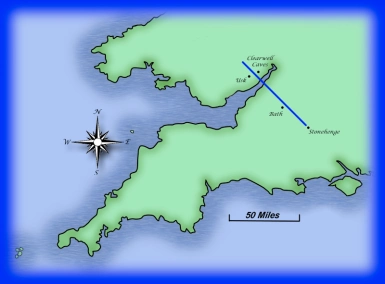
Over the past few years, I’ve come to believe that some thing in south Wales might throw an additional light on the mystery, because this is the region that my pragmatic investigations and my far more nebulous intuition frequently led me to, for a variety of tantalising reasons. If this thing does indeed exist in some form, then it is a tangible relic from our distant past that has a direct bearing on the question of whether or not Christ ever came to these shores ‘in ancient time’, so I shall find it through my own studies or as a result of information passed on to me by others, if it’s there to be found.
In a broadly similar vein, I’ve had detailed correspondence assuring me of the existence of previously undiscovered tombs of Biblical personages in Britain and of other similarly exalted matters. I’m flattered to be considered worthy of such secrets, but I’ll wait until such time as they’re physically revealed to the world by others, rather than take part in speculating about such findings and their momentous implications for us all.
As far as I’m concerned, the great pleasure of looking into matters such as Stonehenge, Silbury Hill, the missing years of Jesus and so forth lies in discovery, which has been described as “seeing what everyone else has seen, but thinking what no one else has thought”, then passing these things on for others to enjoy. At first glance, the ability to think what no one else has thought might seem to be something granted only to the greatest mystics, visionaries and philosophers, but it seems to me that it’s something ludicrously simple that anyone can manage, if they put their minds to it.
Archaeologists may come across on television as being the epitome of enlightened free thinkers, but they operate and make their public announcements according to rigid rules and always within clearly defined boundaries. The Church in its turn makes archaeology appear like some unfettered Bohemian Renaissance movement on acid, so while some enterprising individuals endure agonies of frustration and despair on account of what they see as the bloody-minded intransigence of clerics and archaeologists when it comes to considering new theories, I personally could not be happier at this state of affairs.
This crystal-clear delineation between precisely what and what does not constitute respectable mainstream archaeology allowed me free rein to immerse myself in those aspects of Stonehenge in which archaeologists are prohibited from taking a public interest, regardless of their personal convictions or experiences. As a direct result, I was able to publish something in the region of seven hundred lengthy essays on my former Eternal Idol site, while I wrote almost as much again in response to the thousands of informed comments sent in by others. Some of this was eagerly seized upon and reported in the local, national and international media, so I have no possible source for complaint, while I still have a huge amount of material that resulted from my deliberations of the ruins that I’ve not yet published.
In an identical vein, I was served notice as early as 2004 that, despite the keen interest that a good many of its members privately take in it, the Church is decidedly averse to the study of the ‘missing years’ of the central figure in its faith. As such, I was able to immerse myself in this matter unhampered by having to be a part of and conform to the edicts of some body greater than myself, with the happy results that I’ve described in some detail above.
The subject still interests me and I’m still intrigued when relevant information in the form of old legends or personal experiences comes my way. As I wrote above, I consider I have ample material for a second book dealing with this particular mystery, but I’ll leave it there for now. In closing, I would like to profusely thank all those people who bought my book and who wrote to tell me how much they enjoyed reading it. I also want to thank all those who bought it, read it and reviewed it favourably online.
More on another occasion, but until then, here is a photo of translations into French of my book, which were sadly lost in the aforementioned flames of early March 2018.
